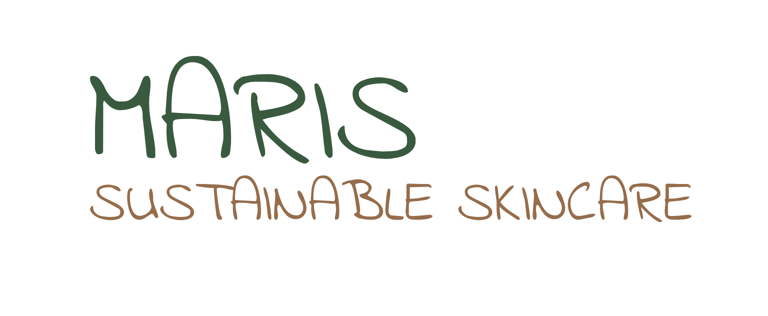The Psychology of Complexion
Challenging the ‘Self-Hate’ Narrative in Skin Bleaching
Mariam Ismail Rumatila
8/8/20256 min read


In the tangled web of global beauty ideals, few practices evoke as much discomfort and complexity as skin bleaching. The numbers alone are enough to make anyone pause in many African countries, between 25% and 80% of women routinely use skin-whitening products. A 2011 report by the World Health Organization reported that more than 40% of African women bleach their skin, with usage soaring to 77% in Nigeria and 59% in Togo. These figures sit side-by-side with dire warnings from health authorities' warnings about everything from irreversible skin damage to long-term neurological harm and cancer risks.
Still, despite all this, millions continue. And for many onlookers, that decision can only be explained in one way: self-hate. But this idea, though easy to repeat, is far too simplistic. It’s a narrative that lacks compassion, context, and a deeper grasp of the systems we live within.
At Maris, we believe in listening before judging. This article invites you to step beyond the surface-level assumptions and explore the psychology behind complexion choices not through pity or blame, but through understanding. Skin bleaching, in this lens, is not just about wanting to be white. It’s about agency in a world that rewards certain appearances. It’s about navigating systems built long before we were born. And it’s about survival in a society where skin still speaks before we do.
Part I: The Socio-Economic Calculus
To someone outside the experience, the act of skin bleaching might appear irrational an act of self-harm, even. But for many individuals, especially women, it is a calculated decision. A trade-off. The perceived social and economic gains outweigh the invisible, long-term health risks.
This decision doesn’t happen in a vacuum. It’s shaped by centuries of colonial legacy, entrenched colorism, and a contemporary economy that continues to reward Eurocentric beauty ideals. It’s shaped by the job you might not get, the partner you might not attract, the respect you might not receive all because of the skin you were born in.
The global skin fairness industry is booming, with a projected market value of $31.2 billion by 2024. This isn’t random growth. It’s the result of an intentional advertising machine that ties lighter skin to happiness, success, desirability, and power. It promises that a lighter shade means a better life.
And tragically, in many places, that promise reflects a real social logic. The research is consistent: skin tone influences social status, job prospects, and marriageability. Studies have even uncovered a “significant positive correlation” between relationship status and skin bleaching. In other words, some women bleach their skin not because they hate themselves, but because they’re trying to attract or satisfy a partner because doing so has real, tangible outcomes.
This isn’t delusion. It’s strategy. It’s adaptation. In a study conducted in Somaliland, many users cited social incentives like better jobs and improved marriage chances as key motivations for using lightening creams. Skin becomes a currency in a world that’s never been neutral.
Calling this self-hate erases these lived, structural realities. It reduces agency to pathology. It tells people their pain is personal, not political.
Part II: Beyond the ‘Self-Hate’ Narrative
Even with all of that said, the conversation can’t end there. Yes, economic and social incentives drive skin bleaching but framing it only through the lens of oppression risks erasing the complexity of how people relate to their bodies, and how they negotiate identity.
The phrase “self-hate” is damaging in more ways than one. It silences curiosity. It shuts down room for empathy. And worst of all, it assumes we know more than the person living the experience.
Some researchers argue that low self-esteem from colonial trauma is at the root of the practice. But that’s not the full story. Others offer a more nuanced view: skin bleaching is not always about rejecting Blackness it can also be about asserting control. Rewriting the rules. Fluidity. A refusal to be boxed in by the skin tone society says should define you.
According to one perspective in the provided texts, some individuals bleach their skin not to erase themselves, but to liberate themselves from negative associations attached to Blackness. It’s a form of resistance against the expectations and stereotypes tied to dark skin.
And crucially, not all skin bleaching is extreme, or identity based. Many users aren’t chasing whiteness. They’re not even trying to look “light.” They’re simply trying to achieve smooth skin. A more even tone. To fade blemishes. To correct hyperpigmentation.
The study referenced in the article on African bleaching practices notes that many users apply these products just to look “cleaner” or “healthier.” In that context, skin lightening becomes cosmetic closer to foundation or acne treatment than transformation. It’s a response to skin conditions, not an attempt to erase one’s ethnicity.
Reducing this broad and complex landscape to “self-hate” erases these diverse realities. And worse it alienates the very people public health efforts are trying to reach. A purely medical campaign will always fall short if it doesn’t honor the why behind the what.
Part III: A Multibillion Dollar Deceptive Market
To truly grasp the scale of this issue, we must look at the machine that fuels it: a multibillion-dollar global industry slick, powerful, and deeply deceptive.
This is not a story of individual choice alone. It’s a story of commerce and manipulation. Of multinational corporations and local distributors who profit from people’s pain and insecurities.
The skin bleaching market was worth $8.8 billion in 2022, and it’s expected to reach $15.7 billion by 2030. These figures are not coincidental. They represent demand manufactured through media, marketing, and misinformation. Products vary in price, but the most affordable ones the ones that reach the most people are often the most toxic.
One of the most dangerous truths of this industry is its lack of transparency. In the
Somaliland study, 61.7% of users didn’t know the active ingredients in their products. Around 35% were influenced by friends’ recommendations, not pharmacists or dermatologists. This isn’t simply a case of consumer ignorance. It’s the predictable result of a system that hides information by design.
Companies have been caught outright lying. One example: Goree claimed their creams met the WHO’s mercury limit (1 ppm). But FDA testing found a concentration of 17,200 ppm. Another product, Face Fresh Beauty Cream, was found to contain 18,500 ppm. These levels are not just dangerous they are criminal.
What’s more troubling is how easily these products travel. Despite local bans in many
African countries, the continent has become a dumping ground for dangerous creams from Asia and Europe. Poor enforcement, low regulation, and high demand create the perfect conditions for an unrelenting flow of toxic goods.
This is not about bad choices. It’s about bad systems. Systems that reward risk, deceive consumers, and exploit cultural wounds.
Conclusion: A Path Beyond the Paradox
If we want to stop the spread of skin bleaching, we need to be honest: what we’re doing isn’t working.
The problem is not awareness. The problem is that our messaging doesn’t match people lived realities. We talk about cancer, mercury poisoning, nerve damage. But the motivations we’re speaking to go far beyond health. They go into identity. Economics. Hope. Love. Survival.
Here’s the paradox: the more we hammer down on health dangers, the more we fail to speak to the real motivations behind the practice. People aren’t bleaching just because they don’t know better. They’re bleaching because they know what lighter skin buys them in this world.
To change behavior, we have to change what that skin buys.
This means building a strategy rooted in empathy, not judgment. Here’s what that could look like:
1. Evolve public health messaging.
Let’s move beyond fear. Instead of only warning about consequences, let’s work to dismantle the systems that make light skin desirable in the first place. As one report suggests, we need culturally relevant, local, and diaspora-led anti-colorism campaigns that reshape how we talk about beauty, worth, and skin.
2. Strengthen international regulation.
The Minamata Convention on Mercury is a great start but it’s not enough. Enforcement must be non-negotiable. Transnational companies cannot be allowed to profit from lies, especially in regions with weaker protections. We need to close loopholes, not create new ones.
3. Invest in psychological research.
We need to know more not just about the products, but about the people. As one study points out, exploring the psychology of complexion can help us design new health models. Ones that encourage acceptance of natural skin tone not through shame or fear, but through care, truth, and deep listening.
At Maris, we believe skincare should be a celebration not a survival strategy. And yet, we understand why so many feel they must make that trade. To truly end the skin bleaching epidemic, we must stop looking at it only as a personal flaw and start seeing it as a collective responsibility.
Change begins when we stop asking, “Why don’t they love themselves?”
And start asking, “What kind of world have we built, where this feels like the only option?”
Let’s build something better. Together.
Join the Maris Community
© 2025 Maris Speak Up. All rights reserved.
Your privacy is important to me. Rest assured, your email will never be shared or sold.
Info@marissustainableskincare.com
Our official email
Join our community of early supporters and get exclusive benefits when we launch our skincare brand. As a founding insider, you’ll be the first to hear about product updates, enjoy early access, and receive special rewards made just for our day-one members. Plus, you'll get skincare tips and behind-the-scenes content as we build something meaningful together.
